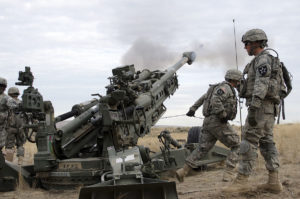BAE Systems has signed a new agreement with the U.S. Army to build M777 lightweight 155mm howitzer structures, which the company said sets conditions to restart the weapon’s production line.
The first M777 structures under the initial $50 million agreement announced Thursday are set to be delivered in 2025, with BAE Systems noting the company is still finalizing the contract’s details and total value with the Army.

“This new contract creates the optimum conditions for a restart of M777 production in the U.K., and presents an opportunity to new and existing users to join a new M777 production initiative and take advantage of the benefits from a hot production line and economies of scale,” the company said in a statement.
BAE Systems said it will work with both its U.K. and U.S.-based supply chains as it moves into producing M777 structures again, which it noted follows increasing global interest in the 155mm howitzer and after the U.S., Canada and Australia have donated the system to Ukraine.
“This restart of production of the major structures for the U.S. Army’s M777s comes at a critical time, with howitzers deployed on operations in Ukraine,” John Borton, vice president and general manager of BAE Systems Weapons Systems U.K., said in a statement. “We understand that they are performing well and we are very proud of our role in supporting our allies.”
The U.S. has provided Ukraine with nearly 200 155mm howitzers to assist in its fight against Russia’s ongoing invasion, according to the Pentagon, which includes BAE Systems’ M777 platform.
Pentagon Acquisition Chief Bill LaPlante has previously said the department would need to assess replacing the howitzer system without a currently active production line (Defense Daily, May 6 2022).
BAE Systems noted there are currently more than 1,250 M777s “in service with ground forces in the U.S., Ukraine, the Americas, Australia and India.”
“The M777 will remain at the forefront of artillery technology well into the future through the use of technical insertions, long-range precision guided munition developments, and flexible mobility options,” Borton said.